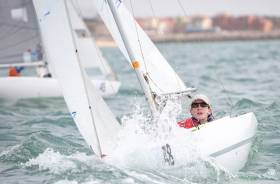Displaying items by tag: Patrick Hassett
Nine countries took part in the 2019 Para World Sailing Championships last week in Puerto Sherry, near Cadiz in Spain, writes Irish competitor Patrick Hassett.
The Spaniards had a home advantage as tides were tricky and the Spanish Nationals had been held there three weeks ago.
Racing was held over four consecutive days with three 50-minute races each day. I was very happy with my performance at this level as I came either 13th or 15th (out of 18) in the majority of these races, with the final race of the series being my best (11th). My overall result was 15th.
Other competitors included two-time Paralympic gold medallist Damien Seguin (who finished first) and fellow Paralympians Antonio Squizzato and Bjornar Erikstad, who finished second and third respectively.
The weather in Puerto Sherry was amicable. However, the waves gave me more experience with the bilge pump than I had anticipated!
The course was a standard windward-leeward, with a gate as the leeward mark. The finish line was crossed with the boats on a run which was unusual.
The event allowed me to gain experience racing against a large fleet of 2.4mRs. I also got the opportunity to chat to sailors who had been sailing these boats for many years and pick up some tips and tricks from the veterans.
I thoroughly enjoyed the experience and look forward to continuing to improve my sailing.
























































